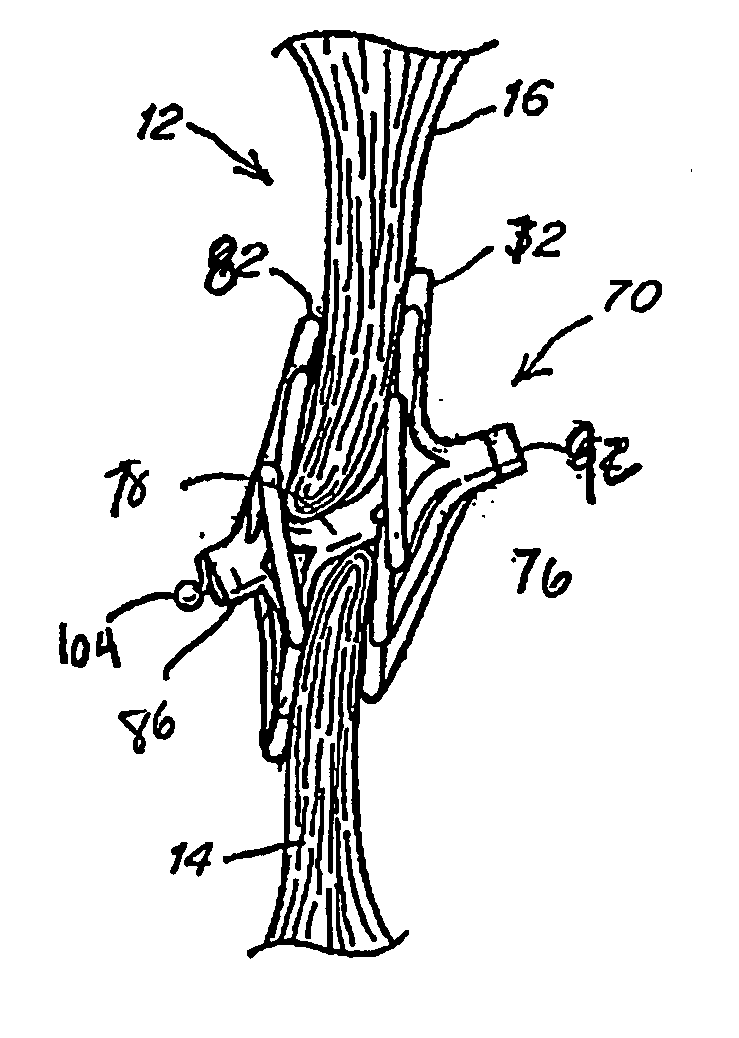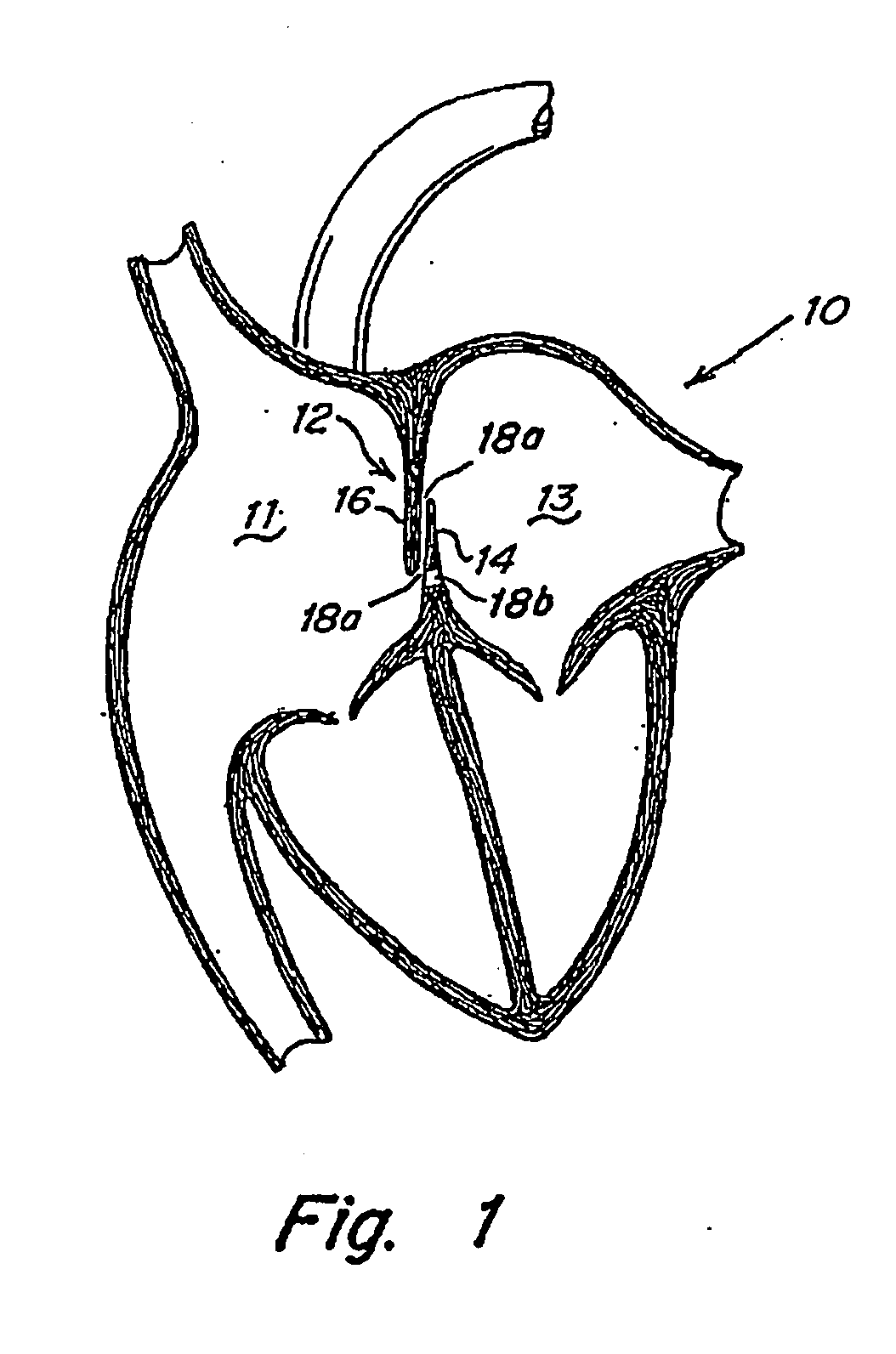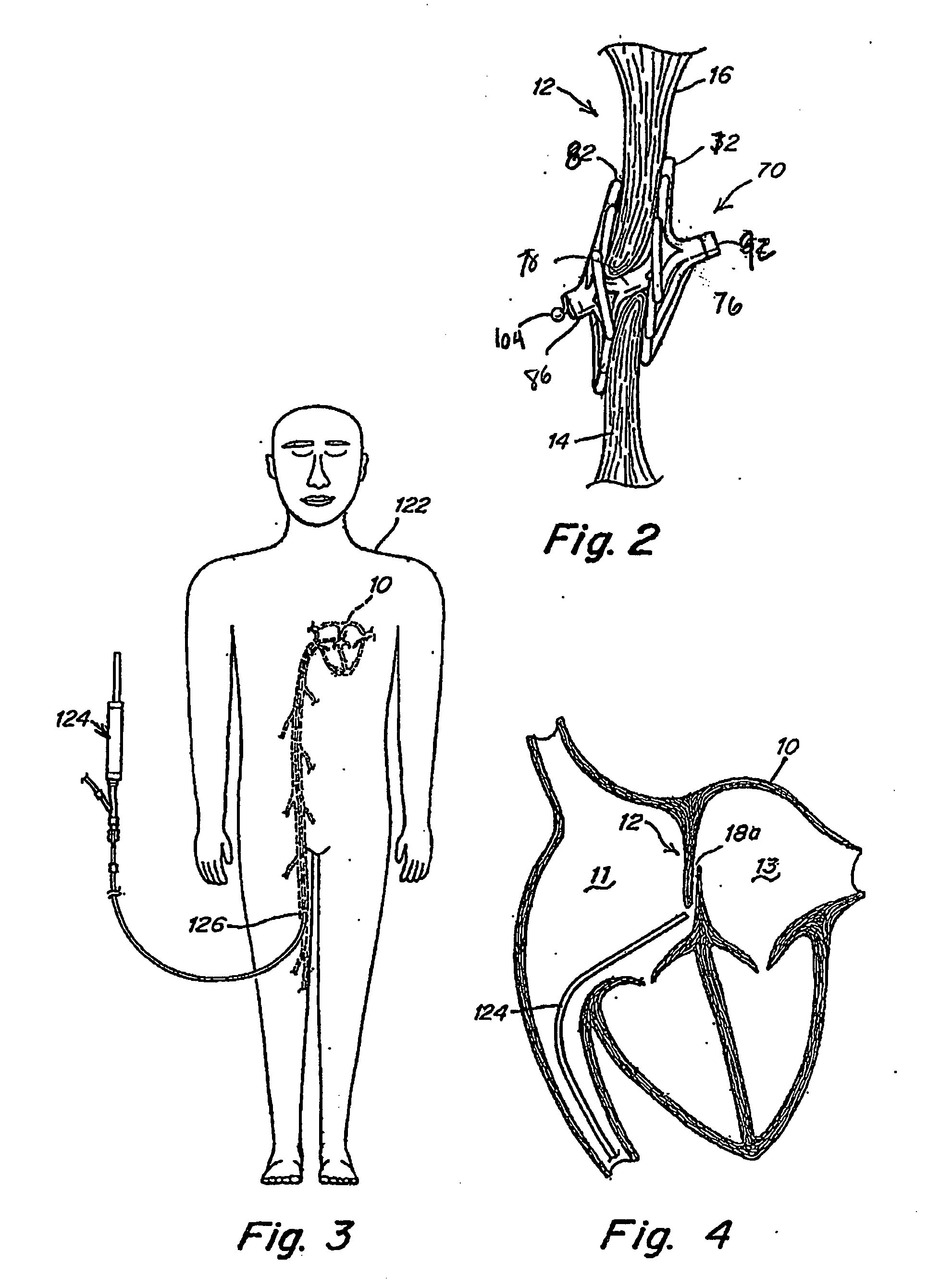Adjustable length patent foramen ovale (PFO) occluder and catch system
- Summary
- Abstract
- Description
- Claims
- Application Information
AI Technical Summary
Benefits of technology
Problems solved by technology
Method used
Image
Examples
Embodiment Construction
[0065] Various embodiments of the present invention provide implants intended to facilitate occluding an aperture within body tissue. Aspects of the present invention include devices, delivery / retrieval systems and techniques for delivering such devices intended to occlude an aperture within body tissue. In particular and as described in detail below, the described occluder may be used for closing an ASD, ventricular septal defect (VSD) or PFO in the atrial septum of a heart. Although the embodiments are described with reference to an ASD, VSD or PFO, one skilled in the art will recognize that the devices and methods of the present invention may be used to treat other anatomical conditions. As such, the invention should not be considered limited in applicability to any particular anatomical condition. In addition, the systems and methods for delivery and retrieval, and for catching an occluder in a deployed state, which are aspects of the present invention, may also be used in conne...
PUM
 Login to View More
Login to View More Abstract
Description
Claims
Application Information
 Login to View More
Login to View More - R&D
- Intellectual Property
- Life Sciences
- Materials
- Tech Scout
- Unparalleled Data Quality
- Higher Quality Content
- 60% Fewer Hallucinations
Browse by: Latest US Patents, China's latest patents, Technical Efficacy Thesaurus, Application Domain, Technology Topic, Popular Technical Reports.
© 2025 PatSnap. All rights reserved.Legal|Privacy policy|Modern Slavery Act Transparency Statement|Sitemap|About US| Contact US: help@patsnap.com



